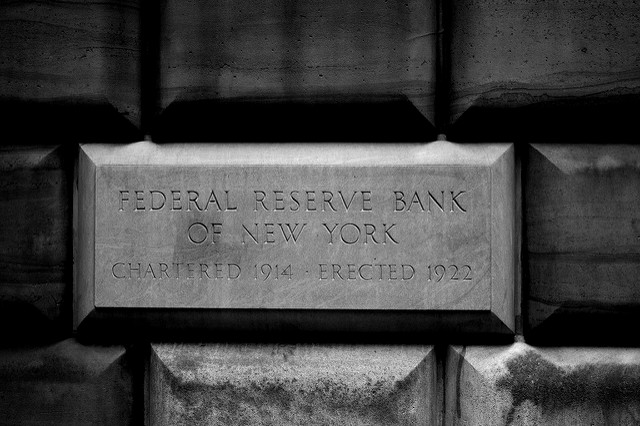Redacted Version of the June 2017 FOMC Statement

| May 2017 | June 2017 | Comments |
| Information received since the Federal Open Market Committee met in March indicates that the labor market has continued to strengthen even as growth in economic activity slowed. | Information received since the Federal Open Market Committee met in May indicates that the labor market has continued to strengthen and that economic activity has been rising moderately so far this year. | Shades GDP up |
| Job gains were solid, on average, in recent months, and the unemployment rate declined. | Job gains have moderated but have been solid, on average, since the beginning of the year, and the unemployment rate has declined. | Shades labor conditions down |
| Household spending rose only modestly, but the fundamentals underpinning the continued growth of consumption remained solid.? Business fixed investment firmed. | Household spending has picked up in recent months, and business fixed investment has continued to expand. | Shades up household spending and business fixed investment |
| Inflation measured on a 12-month basis recently has been running close to the Committee’s 2 percent longer-run objective. Excluding energy and food, consumer prices declined in March and inflation continued to run somewhat below 2 percent. | On a 12-month basis, inflation has declined recently and, like the measure excluding food and energy prices, is running somewhat below 2 percent. | Shades inflation down. |
| Market-based measures of inflation compensation remain low; survey-based measures of longer-term inflation expectations are little changed, on balance. | Market-based measures of inflation compensation remain low; survey-based measures of longer-term inflation expectations are little changed, on balance. | No Change |
| Consistent with its statutory mandate, the Committee seeks to foster maximum employment and price stability. | Consistent with its statutory mandate, the Committee seeks to foster maximum employment and price stability. | No Change |
| The Committee views the slowing in growth during the first quarter as likely to be transitory and continues to expect that, with gradual adjustments in the stance of monetary policy, economic activity will expand at a moderate pace, labor market conditions will strengthen somewhat further, and inflation will stabilize around 2 percent over the medium term. | The Committee continues to expect that, with gradual adjustments in the stance of monetary policy, economic activity will expand at a moderate pace, and labor market conditions will strengthen somewhat further. Inflation on a 12-month basis is expected to remain somewhat below 2 percent in the near term but to stabilize around the Committee’s 2 percent objective over the medium term. | Inflation down, growth up |
| Near-term risks to the economic outlook appear roughly balanced. The Committee continues to closely monitor inflation indicators and global economic and financial developments. | Near term risks to the economic outlook appear roughly balanced, but the Committee is monitoring inflation developments closely. | Watches inflation closely, no longer looking at the rest of the world. |
| In view of realized and expected labor market conditions and inflation, the Committee decided to maintain the target range for the federal funds rate at 3/4 to 1 percent. | In view of realized and expected labor market conditions and inflation, the Committee decided to raise the target range for the federal funds rate to 1 to 1-1/4 percent. | Raises the Fed funds target range 1/4 percent. |
| The stance of monetary policy remains accommodative, thereby supporting some further strengthening in labor market conditions and a sustained return to 2 percent inflation. | The stance of monetary policy remains accommodative, thereby supporting some further strengthening in labor market conditions and a sustained return to 2 percent inflation. | No Change |
| In determining the timing and size of future adjustments to the target range for the federal funds rate, the Committee will assess realized and expected economic conditions relative to its objectives of maximum employment and 2 percent inflation. | In determining the timing and size of future adjustments to the target range for the federal funds rate, the Committee will assess realized and expected economic conditions relative to its objectives of maximum employment and 2 percent inflation. | No Change |
| This assessment will take into account a wide range of information, including measures of labor market conditions, indicators of inflation pressures and inflation expectations, and readings on financial and international developments. | This assessment will take into account a wide range of information, including measures of labor market conditions, indicators of inflation pressures and inflation expectations, and readings on financial and international developments. | No Change |
| The Committee will carefully monitor actual and expected inflation developments relative to its symmetric inflation goal. | The Committee will carefully monitor actual and expected inflation developments relative to its symmetric inflation goal. | No Change |
| The Committee expects that economic conditions will evolve in a manner that will warrant gradual increases in the federal funds rate; the federal funds rate is likely to remain, for some time, below levels that are expected to prevail in the longer run. | The Committee expects that economic conditions will evolve in a manner that will warrant gradual increases in the federal funds rate; the federal funds rate is likely to remain, for some time, below levels that are expected to prevail in the longer run. | No Change |
| However, the actual path of the federal funds rate will depend on the economic outlook as informed by incoming data. | However, the actual path of the federal funds rate will depend on the economic outlook as informed by incoming data. | No Change |
| The Committee is maintaining its existing policy of reinvesting principal payments from its holdings of agency debt and agency mortgage-backed securities in agency mortgage-backed securities and of rolling over maturing Treasury securities at auction, | The Committee is maintaining its existing policy of reinvesting principal payments from its holdings of agency debt and agency mortgage-backed securities in agency mortgage-backed securities and of rolling over maturing Treasury securities at auction. | No Change |
| and it anticipates doing so until normalization of the level of the federal funds rate is well under way. | The Committee currently expects to begin implementing a balance sheet normalization program this year, provided that the economy evolves broadly as anticipated. | I guess the low 1% region is what is considered the low end of a normal federal funds rate. |
| This policy, by keeping the Committee’s holdings of longer-term securities at sizable levels, should help maintain accommodative financial conditions. | This program, which would gradually reduce the Federal Reserve’s securities holdings by decreasing reinvestment of principal payments from those securities, is described in the accompanying addendum to the Committee’s Policy Normalization Principles and Plans. | Promises the slow end of QE, as they may start to let securities mature. |
| Voting for the FOMC monetary policy action were: Janet L. Yellen, Chair; William C. Dudley, Vice Chairman; Lael Brainard; Charles L. Evans; Stanley Fischer; Patrick Harker; Robert S. Kaplan; Neel Kashkari; and Jerome H. Powell. | Voting for the FOMC monetary policy action were: Janet L. Yellen, Chair; William C. Dudley, Vice Chairman; Lael Brainard; Charles L. Evans; Stanley Fischer; Patrick Harker; Robert S. Kaplan; and Jerome H. Powell. | All but one follow through on the idea that tightening is needed. |
| Voting against the action was Neel Kashkari, who preferred at this meeting to maintain the existing target range for the federal funds rate. | Kashkari is a quirky guy.? Who knows?? Maybe he notes the flattening yield curve. |
Comments
- Labor conditions are reasonably good. GDP might be improving.
- The yield curve is flattening, with long rates falling.
- Stocks and gold fall. Bonds rose this morning and remain up.
- I think the Fed is too optimistic about the economy. I also think that they won?t get far into letting securities mature before they stop reinvestment.
- Interesting that they dropped the statement about following global financial conditions.










